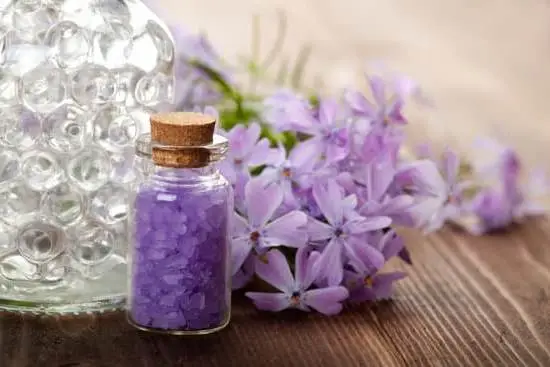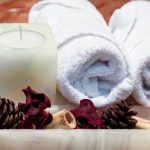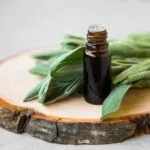Aromatherapy, the practice of using essential oils for therapeutic purposes, has gained immense popularity in recent years. People are turning to this ancient healing method to improve their well-being and address various health concerns. At the heart of aromatherapy lies the aromatherapy diffuser, a device that helps disperse essential oils into the air for inhalation. In this article, we will explore what an aromatherapy diffuser is, its purpose in aromatherapy, and delve deeper into its mechanism and benefits.
The rising popularity of aromatherapy can be attributed to its holistic approach in promoting physical and emotional wellness. Essential oils derived from plants have been used for centuries to support relaxation, alleviate stress, enhance mood, boost immune function, and address a wide range of ailments. With people seeking natural alternatives to conventional medicine and self-care practices gaining traction, aromatherapy has emerged as a compelling option.
An aromatherapy diffuser plays a crucial role in harnessing the power of essential oils. These devices are designed to disperse essential oils into the air effectively so that their aromatic molecules can be easily inhaled and absorbed by our bodies. By transforming pure essential oils into fine mist or vapor, diffusers create a soothing ambiance while providing all the therapeutic benefits associated with each oil’s unique properties.
In the following sections of this article, we will delve into what exactly an aromatherapy diffuser is and discuss its purpose in the practice of aromatherapy. We will also explore how these devices work, different types available on the market today, their benefits, suitable essential oils for use with diffusers, tips for choosing the right one for your needs and budget, as well as guide you through using and maintaining an aromatherapy diffuser properly.
So let’s embark on this aromatic journey together.
What is an Aromatherapy Diffuser
An aromatherapy diffuser is a device that disperses essential oils into the air, allowing for easy inhalation and absorption of their therapeutic properties. It is an integral tool in the practice of aromatherapy, which involves using essential oils to promote physical and mental well-being. In this section, we will delve into the definition and purpose of an aromatherapy diffuser, shedding light on how it can enhance your overall health and wellness.
Aromatherapy diffusers are specially designed to break down essential oils into tiny molecules that can be dispersed effectively throughout a room. These devices use various methods to release the scents and healing benefits of essential oils, such as ultrasonic technology, nebulization, or heat. The diffuser creates a fine mist or vapor that carries the aromatic compounds of the oil into the air, allowing you to breathe in these therapeutic molecules.
The primary purpose of an aromatherapy diffuser is to disperse essential oils into the air in a controlled manner. By doing so, it helps create a soothing environment and encourages relaxation while providing numerous health benefits. When you inhale the aromatic molecules from difffused essential oils, they travel through your nasal passages and stimulate receptors in your brain, triggering various physiological responses. This can have a profound impact on your mood, emotions, respiratory system, immune system, and more.
| Situation | Benefit |
|---|---|
| During sleep | Promotes relaxation and improves sleep quality |
| In a home office | Enhances focus and concentration |
| During meditation or yoga practice | Creates a calming and spiritually uplifting atmosphere |
| In a spa or wellness center | Aids in stress reduction and relaxation for clients |
An aromatherapy diffuser is not only a convenient way to enjoy the benefits of essential oils but also an effective tool for creating a conducive environment for various activities. Whether you seek relaxation, rejuvenation, improved mood, or relief from certain health issues, incorporating an aromatherapy diffuser into your well-being routine can bring noticeable enhancements to both your physical and mental state.
How Does an Aromatherapy Diffuser Work
An aromatherapy diffuser is a device that disperses essential oils into the air, allowing their therapeutic benefits to be experienced through inhalation. Understanding how an aromatherapy diffuser works is essential for maximizing its functionality and achieving the desired aromatherapy experience.
The mechanism behind an aromatherapy diffuser’s functionality varies depending on the type of diffuser being used. Here are some common types of diffusers and how they work:
- Ultrasonic Diffusers: These diffusers use water and ultrasonic vibrations to create a fine mist of essential oils and water particles. The ultrasonic waves break down the essential oils into microparticles, which are then released into the air as a gentle mist. This method not only disperses the aroma effectively but also adds humidity to the surrounding environment, making it ideal for dry climates.
- Nebulizing Diffusers: Nebulizing diffusers work by using pressurized air or a small pump to atomize pure essential oils into microscopic droplets without dilution with water or heat. These droplets are then dispersed into the air, creating a concentrated aromatic experience. Nebulizing diffusers are known for their strong and immediate scent release, making them popular amongst those seeking intense aromatherapy benefits.
- Heat Diffusers: Heat diffusion involves using heat to evaporate essential oils and disperse their aroma in the surrounding space. Typically, heat diffusers use a candle or electric heating element to warm the essential oil, causing it to gradually evaporate into the air. However, it’s important to note that some experts argue that heat can alter and degrade the therapeutic properties of certain essential oils.
It’s worth noting that regardless of the type of diffuser being used, it’s important to follow manufacturer instructions for optimal usage and safety precautions. Additionally, ensuring proper ventilation in the room where you’re using an aromatherapy diffuser can help maintain air quality and prevent any potential overpowering of fragrances. By understanding how aromatherapy diffusers work, individuals can choose the most suitable type for their needs and enhance their overall aromatherapy experience.
Types of Aromatherapy Diffusers
An aromatherapy diffuser is a device that disperses essential oils into the air, creating a pleasant and therapeutic ambiance. There are several types of aromatherapy diffusers available in the market, each with its own unique way of delivering the benefits of essential oils.
One popular type of diffuser is the ultrasonic diffuser. This type of diffuser uses electronic frequencies to create vibrations in water, which then releases a fine mist that carries the essential oil particles into the air. Ultrasonic diffusers are versatile and can also serve as humidifiers, adding moisture to dry indoor environments.
Another type of diffuser is the nebulizing diffuser. This diffuser works by using pressurized air to break down essential oils into a fine mist without the need for water or heat. Nebulizing diffusers are highly effective in dispersing pure undiluted essential oils, making them ideal for therapeutic purposes.
Heat diffusers, on the other hand, use heat to evaporate essential oils and disperse their aroma into the surrounding space. They often come in the form of candle burners or electrically heated pads or plates. Heat diffusion is known for its ability to quickly fill a room with fragrance, but it may alter some of the therapeutic properties of certain essential oils due to exposure to high temperatures.
Each type of aromatherapy diffuser has its own pros and cons, depending on individual preferences and needs. Some people prefer ultrasonic or nebulizing diffusers for their ability to maintain the integrity of essential oils and deliver strong scents. Others may opt for heat diffusers if they prefer a quick burst of fragrance or if they use fragrance oils instead of pure essential oils.
| Type | Pros | Cons |
|---|---|---|
| Ultrasonic Diffuser | Can also humidify the air, gentle diffusion, offers color-changing LED lights | Requires water for operation, scent may be less concentrated |
| Nebulizing Diffuser | Pure undiluted diffusion, strong aroma, maintains therapeutic properties of essential oils | Noisy operation, higher price range |
| Heat Diffuser | Faster fragrance release, suitable for fragrance oils or thick essential oils mixed with carrier oils | Alters some therapeutic properties of essential oils, can pose a fire hazard if not used safely |
When choosing the right aromatherapy diffuser for your needs, consider factors such as your desired level of scent intensity, budget, and any personal preferences you may have. It’s always a good idea to read reviews and compare different models before making a decision. Ultimately, finding the right type of diffuser will enhance your aromatherapy experience and allow you to fully enjoy the benefits of essential oils.
Benefits of Using an Aromatherapy Diffuser
Aromatherapy diffusers have gained significant popularity in recent years due to their numerous benefits and the increasing interest in holistic wellness practices. By incorporating an aromatherapy diffuser into your daily routine, you can experience a range of advantages that promote physical, mental, and emotional well-being.
- Enhances Mood and Reduces Stress: One of the primary benefits of using an aromatherapy diffuser is its ability to improve mood and reduce stress levels. Essential oils like lavender, chamomile, and bergamot are known for their calming properties, which can help alleviate anxiety and promote relaxation.
As the diffuser disperses these oils into the air, their aromatic molecules stimulate receptors in the brain responsible for emotions, resulting in a sense of tranquility and overall emotional well-being. - Boosts Respiratory Health: Aromatherapy diffusers also have positive effects on respiratory health by improving air quality and opening up airways. Essential oils such as eucalyptus, peppermint, and tea tree have expectorant properties that can help clear congestion caused by allergies or respiratory conditions like asthma. When these oils are diffused into the air, they can penetrate the respiratory system and provide relief from nasal congestion or coughing.
- Improves Sleep Quality: Many people struggle with insomnia or poor sleep quality, but aromatherapy diffusion can offer a natural solution to this problem. Certain essential oils like lavender or valerian root have sedative properties that promote relaxation and improve sleep quality. By using an aromatherapy diffuser before bedtime with these sleep-promoting oils, you can create a calming environment that supports restful sleep.
Utilizing an aromatherapy diffuser in your wellness routine offers a multitude of benefits ranging from mood enhancement to improved respiratory health and better sleep quality. Incorporating essential oils into your daily life through a diffuser is a simple yet effective way to support your overall well-being and create a more relaxing and rejuvenating environment in your home or workspace.
Essential Oils for Aromatherapy Diffusers
Aromatherapy diffusers are a popular tool for enhancing the benefits of essential oils. These diffusers work by dispersing the aroma and therapeutic properties of essential oils into the air, allowing users to enjoy the many benefits of aromatherapy. When it comes to choosing essential oils for use with a diffuser, it is important to consider their suitability and therapeutic properties.
Choosing Suitable Essential Oils
When selecting essential oils for aromatherapy diffusers, it is crucial to consider your desired outcome or intention. Different essential oils have unique properties that can help address various concerns and promote specific effects on the mind and body. Some commonly used essential oils for diffusers include lavender, eucalyptus, peppermint, lemon, tea tree, and bergamot.
Lavender oil is known for its calming properties and is often used to promote relaxation and improve sleep quality. Eucalyptus oil has a refreshing scent that aids in clearing congestion and promoting respiratory health. Peppermint oil offers uplifting and energizing effects that can help improve focus and boost alertness.
Therapeutic Properties
Each essential oil offers its own set of therapeutic properties. For example, lavender oil is renowned for its anti-anxiety and sedative effects. It can also help relieve headaches and reduce inflammation. Eucalyptus oil has antibacterial properties that can support respiratory health by clearing nasal passages and reducing congestion.
Peppermint oil possesses antimicrobial properties that help freshen the air while improving mental focus. Lemon oil has invigorating qualities that not only uplift mood but also act as a natural disinfectant. Tea tree oil is known for its antiseptic properties which make it useful in fighting off infections while bergamot oil promotes relaxation and helps ease tension.
When using different essential oils in an aromatherapy diffuser, you can create personalized blends to suit your needs. By understanding the properties and effects of each essential oil, you can tailor your aromatherapy experience to achieve specific goals or address individual concerns. Remember to always follow safety guidelines and use essential oils responsibly.
Tips for Choosing the Right Aromatherapy Diffuser
Choosing the right aromatherapy diffuser is essential for a fulfilling and effective aromatherapy experience. With the various options available in the market, it can be overwhelming to decide which diffuser is best suited for your needs. Here are some helpful tips to consider when choosing an aromatherapy diffuser:
Firstly, consider the size of the diffuser. If you plan to use it in a small room or office, a compact diffuser would be suitable. On the other hand, if you intend to use it in larger spaces like living rooms or bedrooms, opt for a diffuser with a larger water tank capacity for longer diffusion time.
Next, take into account the features available on different diffusers. Some diffusers offer timers that allow you to set specific intervals for diffusion, while others may have adjustable mist settings that can control the intensity of scent released. Consider what features are important to you and choose a diffuser that aligns with your preferences.
Lastly, determine your budget before purchasing an aromatherapy diffuser. Diffusers come at varying price points depending on their materials, brand reputation, and additional functionalities. While some high-end diffusers may offer advanced features and sleek designs, there are also budget-friendly options available that can still provide a satisfactory aromatherapy experience.
How to Use an Aromatherapy Diffuser
Using an aromatherapy diffuser is a simple and effective way to enjoy the benefits of essential oils in your home or office. Here is a step-by-step guide on how to use an aromatherapy diffuser for the optimal aromatherapy experience.
Step 1: Choose the Right Location
Before you start using your diffuser, it’s important to choose the right location for it. The ideal place would be a clean, flat surface that is near an electrical outlet. Make sure to leave enough space around the diffuser for proper airflow.
Step 2: Fill the Diffuser with Water
Most aromatherapy diffusers have a water tank that needs to be filled before use. Remove the cover or top of your diffuser and fill it with clean, cool tap water up to the fill line indicated. Be careful not to overfill as this may cause spills or malfunctions.
Step 3: Add Essential Oils
After filling the water tank, it’s time to add your desired essential oils. Start by adding 5-10 drops of essential oil to the water, depending on your preference and the size of your room. You can use a single oil or create your own blend by combining different oils.
Step 4: Replace Cover and Turn on the Diffuser
Once you’ve added your essential oils, securely replace the cover or top of your diffuser. Plug in the diffuser into an electrical outlet and turn it on according to the manufacturer’s instructions. Most diffusers have a timer or settings that allow you to customize how long and how strong you want the aroma diffusion to be.
Step 5: Enjoy and Relax
As soon as your diffuser starts releasing aromatic mist, sit back, relax, and breathe in deeply. Allow the gentle aroma to fill the room and create a calming and soothing atmosphere. Take this time to unwind, meditate, or simply enjoy the scent and benefits of the essential oils.
Remember to always follow the manufacturer’s instructions for your specific diffuser model. It’s also important to clean your diffuser regularly to prevent buildup and maintain its performance.
Using an aromatherapy diffuser is a wonderful way to incorporate essential oils into your daily routine. Whether you’re looking for relaxation, stress relief, or an energy boost, using a diffuser can help you achieve your desired effects easily and conveniently.
Cleaning and Maintenance of an Aromatherapy Diffuser
Cleaning and maintenance are essential aspects of ensuring the longevity and effectiveness of an aromatherapy diffuser. Regular cleaning not only helps to maintain the device’s aesthetic appeal but also prevents the buildup of oils, debris, and bacteria that can compromise its performance. By following simple cleaning and maintenance routines, you can ensure that your diffuser functions optimally and continues to provide a pleasant aromatherapy experience.
To clean an aromatherapy diffuser, start by emptying any remaining water or oil from the reservoir. Then, using a soft cloth or sponge dampened with warm water, wipe the inside and outside surfaces of the diffuser to remove any residue. Be cautious not to get any water into the air outlet or other electronic components.
For stubborn residue, you can use a mild detergent or vinegar diluted in water as gentle cleaning agents. However, remember to thoroughly rinse the diffuser before using it again to avoid any lingering scent or taste.
In addition to regular cleaning, it is important to perform maintenance on your aromatherapy diffuser to maximize its lifespan. This includes checking and replacing parts as needed. For example, if your diffuser has a replaceable filter or wick, make sure to change them regularly according to the manufacturer’s instructions. Also, inspect the power cord for any damage and replace it if necessary for safety purposes.
By establishing a routine for cleaning and maintaining your aromatherapy diffuser, you can ensure its longevity while enjoying its benefits for years to come. Regular upkeep will not only enhance its functionality but also prevent any potential issues that may arise due to neglect or improper care. Remember that each model may have unique cleaning requirements, so always consult the manufacturer’s guidelines for specific instructions tailored to your particular diffuser model.
Conclusion
In conclusion, aromatherapy diffusers play a vital role in enhancing the benefits of aromatherapy and creating an optimal environment for relaxation and wellness. These devices are designed to disperse essential oils into the air, allowing their therapeutic properties to be inhaled and absorbed by the body. By understanding how aromatherapy diffusers work and the various types available, individuals can choose the right diffuser that suits their needs and preferences.
Using an aromatherapy diffuser offers numerous benefits, both physical and emotional. The diffused essential oils can help promote better sleep, relieve stress and anxiety, boost mood, improve focus and concentration, alleviate respiratory issues, and even repel insects.
Furthermore, different essential oils have specific therapeutic properties, such as lavender for relaxation, peppermint for mental clarity, or eucalyptus for congestion relief. By selecting the appropriate essential oil and pairing it with a suitable diffuser, individuals can create personalized aromatherapy experiences tailored to their well-being goals.
When choosing an aromatherapy diffuser, it is important to consider factors such as size, features, ease of use, budget, and personal preferences. Whether one prefers a small portable diffuser for travel or a larger one for home use, there are options available to suit every lifestyle. Regular cleaning and maintenance also ensure that the diffuser operates efficiently for long-lasting use.
To fully explore the world of aromatherapy and reap its benefits through an aromatherapy diffuser is an exciting journey waiting to be embarked upon. It’s worth trying out different essential oils blends that resonate with individual needs or experimenting with various diffusion methods to find what works best.
Ultimately, incorporating an aromatherapy diffuser into daily self-care routines can enhance overall well-being and provide a sanctuary from the demands of daily life. So go ahead and embrace this transformative practice – allow yourself to be enveloped in scents that soothe your senses and uplift your spirit.
Frequently Asked Questions
What does an aromatherapy diffuser do?
An aromatherapy diffuser is a device designed to disperse essential oils into the air, allowing their aroma and beneficial properties to be experienced. It works by breaking down the essential oil into tiny particles, which are then emitted as a mist or vapor.
This can be done through various methods such as ultrasonic vibrations, heat, or fan-powered dispersion. The diffuser helps to evenly distribute the scent throughout a room or space, creating a pleasant and therapeutic atmosphere.
Are aromatherapy diffusers good for you?
Aromatherapy diffusers can offer potential benefits for overall well-being and mental health. The inhalation of essential oils has been found to have positive effects on mood, stress levels, relaxation, and even certain physical ailments.
However, it’s important to note that individual reactions can vary depending on personal preferences and sensitivities. Some people may find certain scents or concentrations overpowering or irritating, so it’s vital to choose oils that are safe for your specific needs and always follow proper usage guidelines.
How do you use aromatherapy oil diffuser?
Using an aromatherapy oil diffuser is typically straightforward and can vary depending on the type of device you have. For most ultrasonic diffusers, you would start by filling the water reservoir with clean water up to the indicated level. Then add a few drops of your chosen essential oil directly into the water (typically 5-10 drops per 100 ml).
Afterward, simply turn on the diffuser according to its instructions, selecting any desired settings such as timer duration or mist intensity if available. As the device operates, it will disperse the aromatic vapor into the air over time, creating an inviting ambiance within your space. Always consult the user manual for specific instructions related to your particular diffuser model.

Are you looking for a natural way to improve your health and wellbeing?
If so, aromatherapy may be the answer for you.





